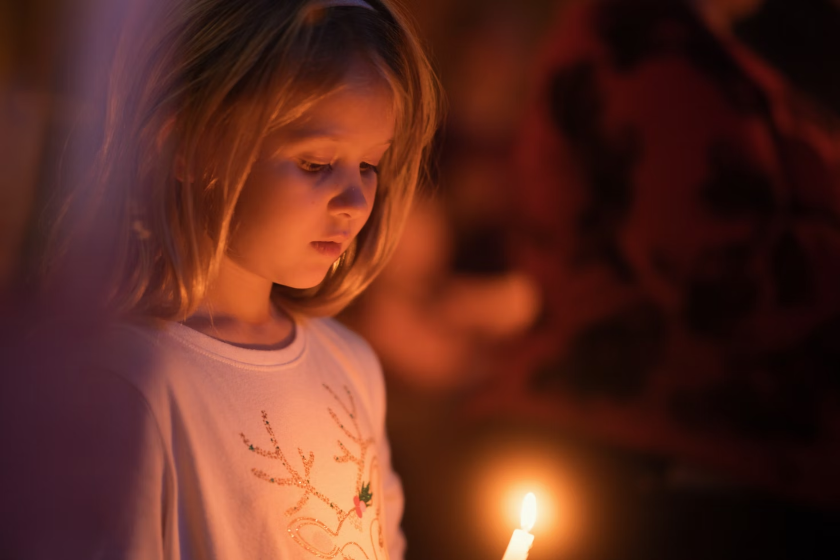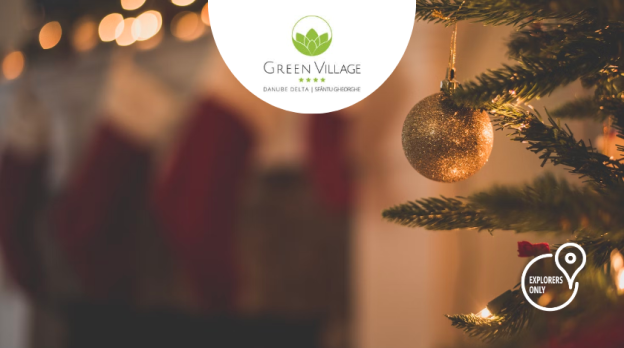The Danube Delta is the area with the most ethnic groups present in all of Romania. During the holidays, this diversity is especially visible from the point of view of the traditions observed by each house. The Christmas holiday is a real pleasure in the Danube Delta!
Especially in the years when the snow made its presence, the winter holidays were really special. The snow covering the waterholes around the Danube, the reeds covered with moss and the winter swans circling made those days truly memorable!
In this article we have collected some of the traditions specific to the Christmas celebration in the Danube Delta and in Dobrogea.

Vecer
Vesera is celebrated on Christmas Eve in the old style, on January 6. The custom is brought by the Cossacks from Ukraine. Vecera means “dinner”.
The residents of Sfântu Gheorghe, in the evening, use to take a colac and go to their relatives. The tradition requires that the “younger relatives” ask forgiveness from the “older relatives” (children from parents, grandchildren from grandparents) for all the mistakes of the past year (those known and those unknown to them), and the host he receives with a portion of “cuchia”, prepared with sweet wheat, poppy and crushed walnuts, “ozvar, a representative drink of the Ukrainians representing a compote of dried and smoked plums in which other fruits are added, “pirijechichii” with “proboi” (a pie filled with morun placenta), “pirijecichii” filled with sauerkraut or potatoes or “pirijecichii” with “vezeca” (sturgeon backbone). “Pirijecichii cu proboi or vezeca” are local specialties. The guests are invited to the meal, are forgiven by the hosts and are expected at the feast the next day as well.
Melancia
Near the New Year according to the old rite, in the evening of January 13, the residents of Sfântu Gheorghe go with “Melanca”. The young people from the locality assign themselves different roles and costumes: cossack, bride, Jew, gypsy and alai (a group of boys and girls who carry “whips” with which they snap, “buhai” – a drum with a tail sticking out in the middle made of horse hair and sprinkled with sauerkraut juice makes a loud sound, the bells used to decorate horses), start ringing from house to house.
The plowing or sowing
It’s another custom practiced on New Year’s, in the morning, this time. The children go with the “pusivaiul” from house to house and throw millet, wheat, rice and oats in the household and in the animal stable. This practice is accompanied by wishes for health, abundance and prosperity. After greeting the hosts, the children are invited to the table and served with traditional dishes.
Moșoiul
It is customarily preserved especially in the town of Luncavița. The masoi requires the locals to wear masks when they carol around the village. In Dăieni-Turcoaia, the carolers walk with the mare. The mosoi masks are prepared from gourds and are embellished with various decorative items. Currently, in Luncavița, parades of old men are organized, some of them representing the months of the year.
Oleleu
It is a custom practiced in the evening of Christmas Eve by groups of young men who beat the ground with their sticks while sitting in a circle or semi-circle in front of the house or gate symbolizing the protection of the household from evil spirits. The custom is still practiced in the Măcin area.
Preparing the rolls
During Christmas, in the households of the Danube Delta, various types of cakes or “breads” are prepared. One of them is Crăciunelul, a preparation in the shape of 8, which the locals hung on the icon or in the house, in a nail, until Epiphany. Also, in some houses, the “cakes of the Mother of God” and the “cakes of Jesus” are prepared.












